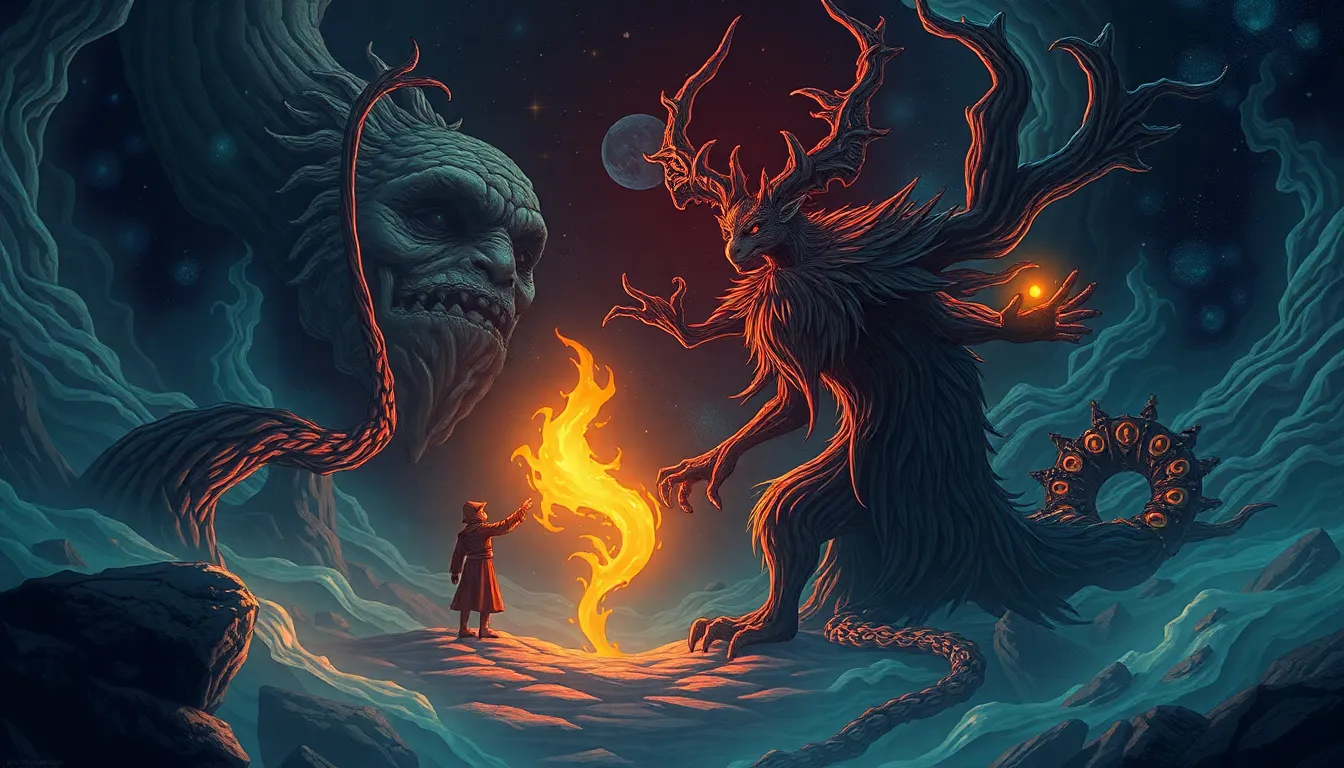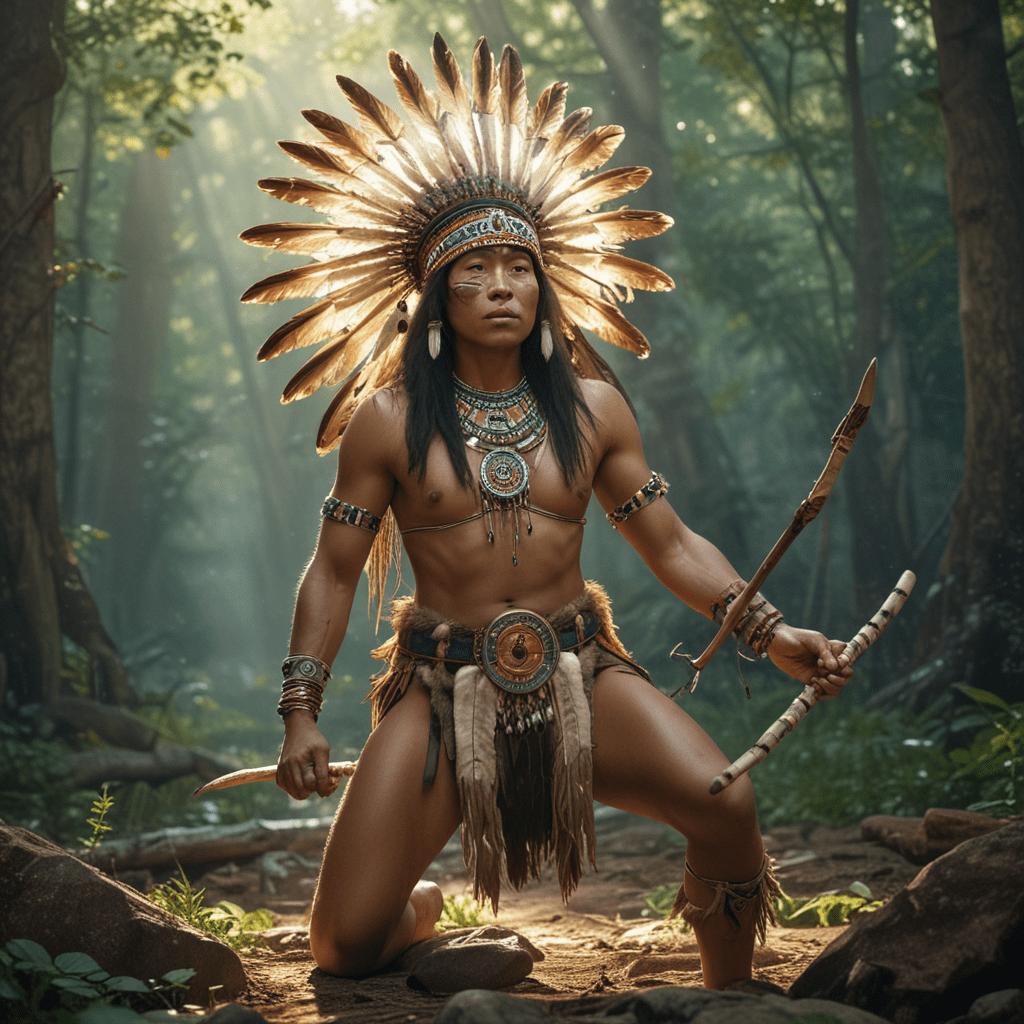Trickster Tales: The Intersection of Myth and Reality
I. Introduction
Trickster tales are an intriguing genre of storytelling that feature cunning characters who use their wits to outsmart others. These figures often break social norms and challenge the status quo, making them compelling subjects for analysis across various cultures. The importance of trickster figures lies in their ability to embody the complexities of human nature, serving as both heroes and anti-heroes in their respective narratives. This article explores the intersection between myth and reality as reflected in trickster tales, showcasing their significance in cultural storytelling.
II. Historical Context of Trickster Tales
The origins of trickster figures can be traced back to ancient mythology, where they often served as mediators between the divine and human realms. These characters evolved over time, adapting to the cultural contexts in which they appeared. For example, in many indigenous cultures, tricksters were revered as creators, while in others, they were seen as disruptive forces.
Key historical examples of trickster tales include:
- The Native American Coyote, known for his cunning and trickery.
- Anansi the Spider from African folklore, who uses his intelligence to outsmart others.
- Loki from Norse mythology, who embodies chaos and mischief.
III. Characteristics of Trickster Figures
Tricksters are often characterized by a set of common traits and behaviors, including:
- Wit and intelligence
- Deception and cunning
- A tendency to challenge authority
- Ambiguity in moral alignment, often straddling the line between good and evil
The dual nature of tricksters as both creators and destroyers reflects their complex roles in mythology. They can bring about positive change, but they can also cause chaos and destruction. Psychological and sociological interpretations of trickster personas highlight their ability to mirror human desires and conflicts, making them relatable figures in storytelling.
IV. Trickster Tales Across Cultures
Trickster tales are found in many cultures worldwide, each featuring unique characters and narratives. Some notable examples include:
- Native American Tricksters: Coyote and Raven are prominent figures known for their cleverness and ability to manipulate situations to their advantage.
- African Trickster Tales: Anansi, the spider, is celebrated for his clever tricks that often teach moral lessons.
- European and Asian Tricksters: Loki from Norse mythology and Wu Gang from Chinese mythology both illustrate the multifaceted nature of tricksters.
Comparative analysis of these themes reveals commonalities, such as the trickster’s role in questioning societal norms and the exploration of human folly.
V. The Role of Tricksters in Society
Tricksters often serve as cultural critics and social commentators, using humor and satire to reflect societal issues. They illuminate the absurdities of life, prompting audiences to reconsider their beliefs and behaviors. The function of humor in trickster tales can serve several purposes:
- To entertain while educating
- To challenge power dynamics and social injustices
- To foster resilience through laughter
Trickster figures, therefore, play a significant role in shaping societal norms and values, acting as catalysts for change in both subtle and overt ways.
VI. The Psychological Significance of Trickster Tales
From a psychological perspective, trickster characters are archetypes that represent various aspects of the human psyche. They allow individuals to explore themes of identity, morality, and the complexities of human behavior. Tricksters often embody the following:
- Ambivalence towards authority and order
- A sense of playfulness that encourages experimentation
- The capacity for transformation and adaptation
This exploration of moral ambiguity through trickster narratives can be therapeutic, providing a safe space for individuals to confront their own inner conflicts and societal challenges.
VII. Modern Interpretations of Trickster Tales
In contemporary literature and media, tricksters have been reimagined to reflect modern concerns and cultural shifts. Their influence is evident in various forms of popular culture, including:
- Films that feature anti-hero protagonists embodying trickster traits
- Comics that explore themes of subversion and rebellion
- Television series that incorporate trickster narratives to comment on societal issues
The resurgence of trickster themes in modern storytelling highlights their enduring relevance and adaptability in a rapidly changing world.
VIII. Trickster Tales and Mythological Themes
The interplay between myth, folklore, and reality is central to understanding trickster tales. These narratives often blur the lines between the sacred and the profane, allowing for a rich exploration of human experience. Mythic structures in trickster stories may include:
- Creation myths that emphasize the trickster’s role in shaping the world
- Tales of transformation that reflect personal growth and change
- Parables that convey moral lessons through humor and mischief
IX. The Impact of Trickster Tales on Cultural Identity
Tricksters serve as symbols of resilience and adaptability within their cultures. They provide a means of preserving cultural heritage through storytelling, allowing communities to pass down important lessons and values across generations. In the context of globalization, trickster narratives are evolving, blending traditional elements with contemporary influences, thus enriching cultural identities. This evolution underscores the dynamic nature of storytelling and the ongoing relevance of trickster figures.
X. Conclusion
Trickster tales offer profound insights into human nature and societal dynamics. They challenge norms, provoke thought, and entertain, making them an enduring aspect of cultural storytelling. As we continue to explore the intersection of myth and reality, the relevance of tricksters remains strong, serving as reminders of our shared humanity and the complexities of our existence.



